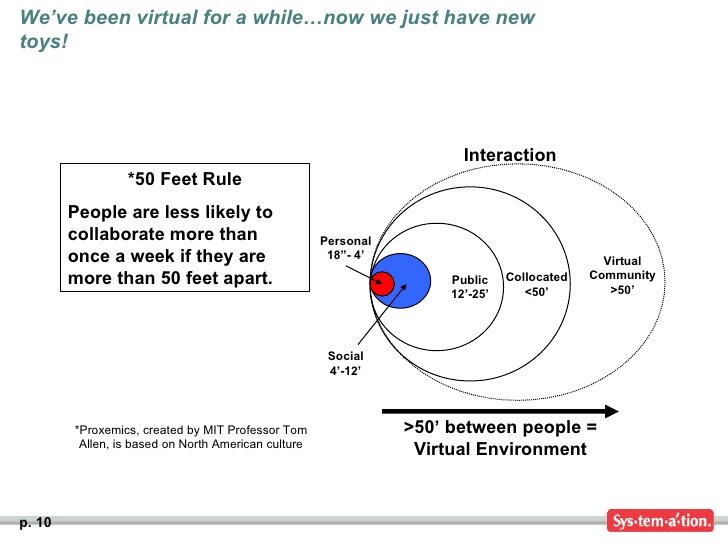Connecting the enterprise - one tool breaks the rule
The world is getting more interdependent, and to get stuff done more people need to coordinate what they are doing with people in other business units. No wonder that collaboration is a hot topic. But what has surprised me is that in spite of an increasing number of tools, most of them are actually not connecting people across business unit boundaries. Sounds like a contradiction? Read on...
Collaboration is still mostly happening within business units
I've been involved in more than 100 social network analysis projects over the last 15 years, and most of these projects we've found that business units operate very much in silos having only limited interactions with other business units.
Physical location has a big impact in who you interact with. Professor Tom Allen discovered this many years ago and coined this the '50-meter rule'. According to this rule, most interaction drops off when you are located more than 50 meters away from another person.
Given that employees from the same business unit are still being physically placed near each other in our workplaces, this only makes the likelihood of you interacting with someone from another business unit even smaller.
Tom Allen's 50 metre rule:
Therefore, when I was running a collaboration analysis project for a professional services firm, I expected to find this same Business Unit silo pattern. But this time we uncovered something new.
Our collaboration research partner Dr Agustin Chevez from HASSELL had cleverly designed the study for the client in such a way that the data sources we analysed (see below) covered the exact same 4-week period. That meant that we could precisely compare interaction patterns across collaboration tools/methods:
Face-to-face interaction (via traditional social network analysis survey)
Email data (Exchange)
Instant messaging data (Lync)
Timesheet data (billable hours analysed to find out who works with who)
Enterprise social network data (Yammer).
One tool breaks the rule
While face-to-face, email, instant messaging and timesheet interaction patterns all stayed mostly within business unit boundaries, one tool broke the rule. Yammer, the enterprise social network, was the only tool in the portfolio that broke the traditional 50m rule. This also meant that it was the only tool that was busting business unit silos.
On reflection that makes a lot of sense. You really don't bump into someone via email, phone or instant messaging as these tools have a clearly defined list of recipients. However, when you post something on an enterprise social network it is not limited to a set of intended recipients, and the audience is therefore anyone and anywhere in the organisation. We also know from our global Yammer benchmarking study that while enterprise social networks do cater for private conversations, the clear majority of messages (about 80%) are actually public.
These two characteristics (open for all, and fully transparent) that are hallmarks of an enterprise social network, and are completely different from email, instant messaging and phone calls that are by nature restricted to a defined (any typically small) set of recipients. You might find it amusing to know what we discovered that 95% of all emails only had single recipient, and the about 50% of emails sent were to a person sitting less than 6 meters away.
Collaboration within teams or collaboration across business units
We have an increasing number of collaboration tools at our disposal, and these are doing a terrific job enabling people to get work done. But as you'll now appreciate they are far from equal. Some are making existing teams work more effectively together within the team and that is undoubtedly of tremendous value. But it is up to the enterprise social network to foster new connections across business units.
To drive organisational performance, we must have collaboration tools that serve different objectives, and we need to be very clear about their strengths, weaknesses and fundamental differences. Professor Andrew Hargadon writes in his book How Breakthroughs Happen: The Surprising Truth About How Companies Innovate (Harvard Business School Press 2003) that innovation happens at the intersection of people and ideas. To do this at on a global scale we need enterprise social networks. They play a fundamentally important role in enabling people to connect across business unit boundaries.



